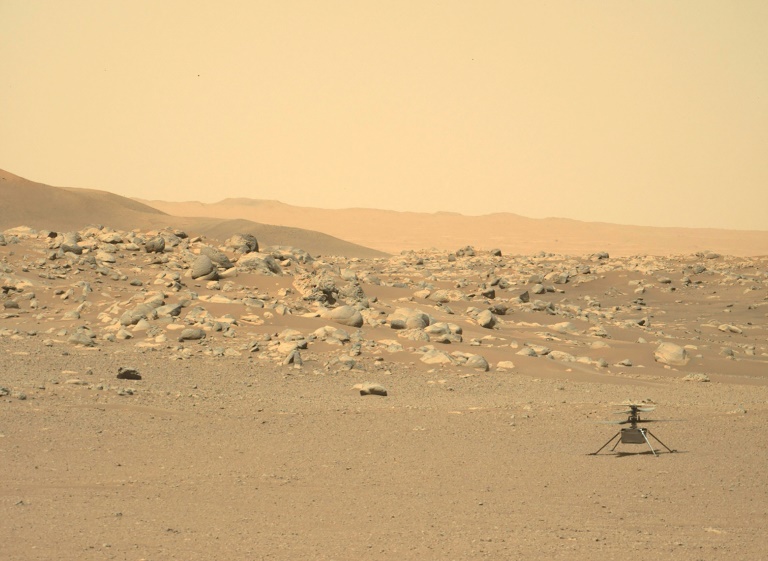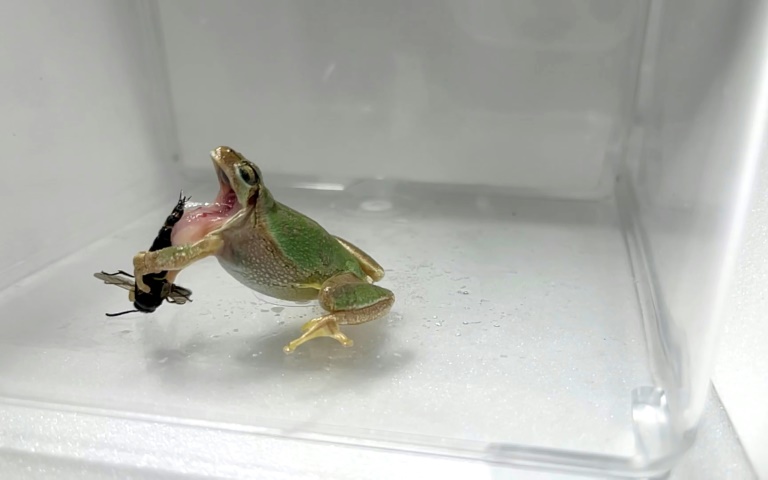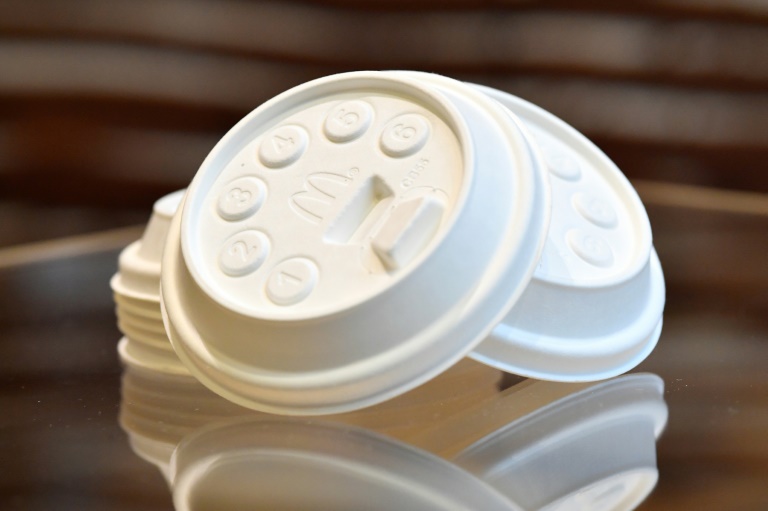It was only supposed to fly five times. And yet NASA’s helicopter on Mars, Ingenuity, has completed 12 flights and it isn’t ready to retire.
Given its stunning and unexpected success, the US space agency has extended Ingenuity’s mission indefinitely.
The tiny helicopter has become the regular travel companion of the rover Perseverance, whose core mission is to seek signs of ancient life on Mars.
“Everything is working so well,” said Josh Ravich, the head of Ingenuity’s mechanical engineering team. “We’re doing better on the surface than we had expected.”
Hundreds of people contributed to the project, though only about a dozen currently retain day-to-day roles.
Ravich joined the team five years ago.
“When I got the opportunity to come work on the helicopter project, I think I had the same reaction as anybody else: ‘Is that even possible?'”
His initial doubts were understandable: The air on Mars has a density equivalent to only one percent that of Earth’s atmosphere. By way of comparison, flying a helicopter on Mars would be like flying one in the thin air nearly 20 miles (30 kilometers) above Earth.
Nor was it easy getting to Mars in the first place. Ingenuity had to withstand the initial shock of takeoff from Earth, and then of the February 18 landing on the red planet following a seven-month voyage through space, strapped to the rover’s belly.
Once in its new surroundings, the tiny (four pound, or 1.8 kilogram) copter has had to survive the glacial cold of Martian nights, drawing warmth from the solar panels that charge its batteries during the day. And its flights are guided using an array of sensors, since the 15-minute lag in communications from Earth makes real-time guidance impossible.
– Scouting duties –
On April 19, Ingenuity carried out its maiden flight, making history as the first motorized craft to fly on another planet.
Exceeding all expectations, it has gone on to fly 11 more times.
“We’ve actually been able to handle winds greater than we had expected,” Ravich told AFP.
“I think by flight three we had actually accomplished all of our engineering goals … (and) got all the information we had hoped to get,” said Ravich, who works for NASA’s famed Jet Propulsion Laboratory (JPL), which developed the helicopter.
Since then, Ingenuity has flown as high as 39 feet (12 meters), and its last flight lasted two minutes and 49 seconds. In all, it has covered a distance of 1.6 miles.
In May, Ingenuity flew its first one-way mission, landing outside the relatively flat “airfield” that had been carefully selected as its initial home.
But not all has gone smoothly. Its sixth flight brought some excitement.
After being knocked dangerously off-balance by a malfunction affecting the photos taken in flight to help it stabilize, the tiny craft was able to recover. It landed, safe and sound, and the problem was resolved.
Ingenuity is now being sent out to scout the way for Perseverance, using its high-resolution color camera.
The purpose is twofold: to chart a path for the rover that is safe, but also which is of scientific interest, notably in geological terms.
Ken Farley, who heads Perseverance’s science team, explained how photos taken by Ingenuity during its 12th flight showed that a region dubbed South Seitha was of less interest than scientists had hoped.
As a result, the rover might not be sent there.
– Favorable conditions –
After more than six months on the red planet, the little drone-like craft has gained a growing following on Earth, featured on coffee cups and T-shirts sold on the internet.
What explains its longevity?
“The environment has been very cooperative so far: the temperatures, the wind, the sun, the dust in the air… It’s still very cold, but it could have been a lot worse,” said Ravich.
In theory, the helicopter should be able to keep operating for some time. But the approaching Martian winter will be challenging.
NASA engineers, now armed with the data from Ingenuity’s flights, are already working on its next-generation successors.
“Something in the 20 to 30 kilograms (range) maybe, able to carry science payloads,” said Ravich.
Those future payloads might just include the rock samples collected by Perseverance.
NASA is planning to retrieve those samples during a future mission — sometime in the 2030s.









